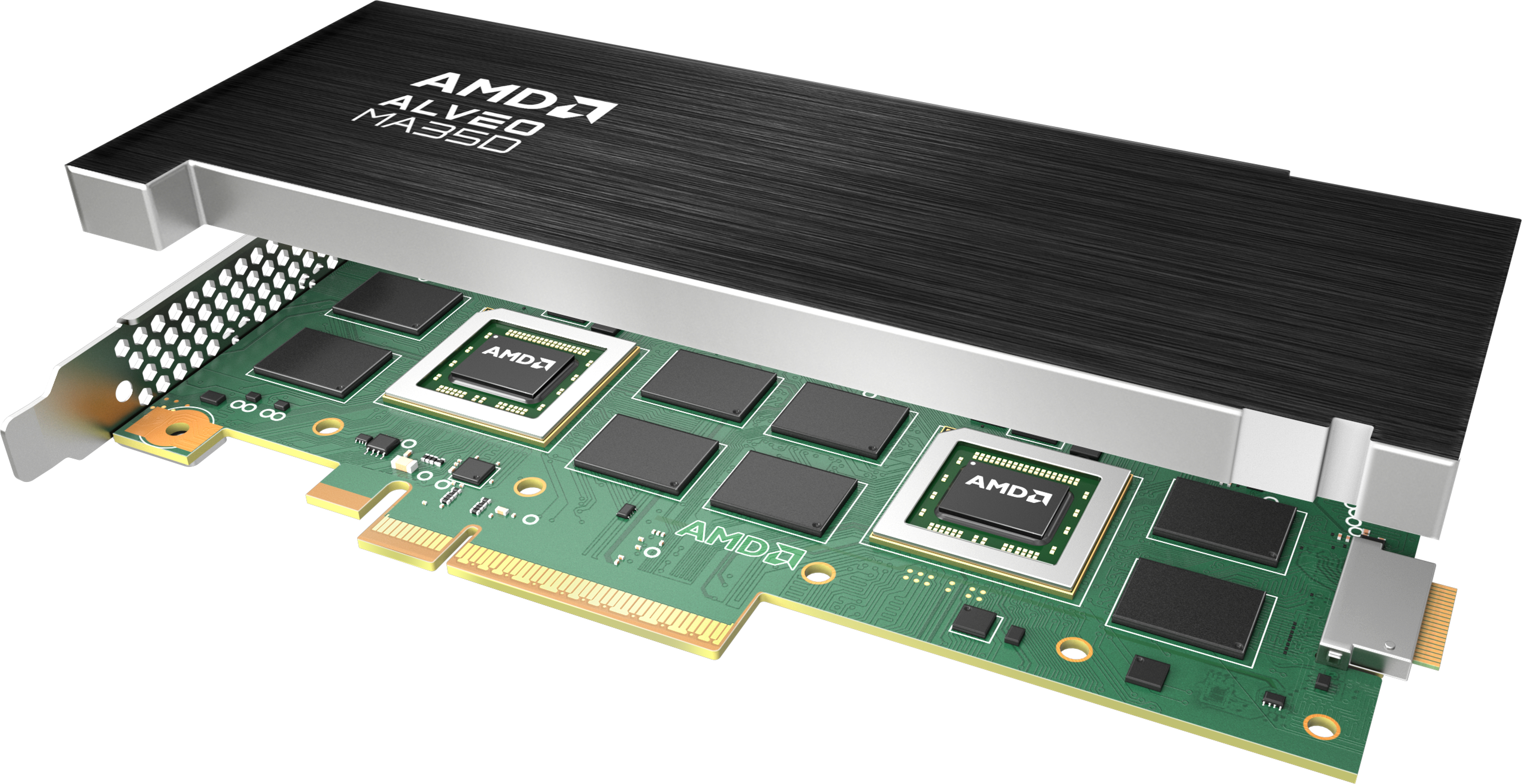
SANTA CLARA, Calif.—AMD has unveiled the AMD Alveo MA35D media accelerator with two 5nm ASIC-based video processing units (VPUs) supporting the AV1 compression standard and will show the card at the NAB Show, April 15-19, in Las Vegas.
Purpose-built to power live interactive streaming services at scale, the new media accelerator is designed for low-latency, high-volume interactive streaming applications, such as watch parties, live shopping, online auctions and social streaming, the company said.
Delivering up to 32x 1080p60 streams per card—four times higher than its Alveo U30 predecessor, the Alveo MA35D enables high channel density while maintaining power-efficient operation and delivering ultra-low latency performance. Compared to the Alveo 30, the new media accelerator delivers 4x max lower latency in 4K and 1.8x greater compression efficiency while achieving the same Video Multimethod Assessment Fusion (VMAF) score, it said.
“We developed the Alveo MA35D with an ASIC architecture tailored to meet the bespoke needs of these providers to reduce both capital and operating expenses for delivering immersive experiences to their users and content creators at scale,” said Dan Gibbons, general manager of AECG Data Center Group at AMD.
Based on purpose-built VPUs that perform all video processing functions to accelerate the video pipeline, the Alveo MA350 minimizes data movement between the CPU and the accelerator. This architecture also reduces latency and maximizes channel density, enabling up to 32x 1080p60, 8x 4Kp60, or 4x 8Kp30 streams per card, it said.
The platform provides ultra-low latency support for the mainstream H.264 and H.265 codecs and features next-generation AV1 transcoder engines, delivering up to a 52% reduction in bitrate for bandwidth savings versus a comparable software implementation, it said.
The accelerator features an integrated AI processor and dedicated video quality engines designed to improve the quality of experience at reduced bandwidth. The AI processor evaluates content, frame-by-frame, and dynamically adjusts encoder settings to improve perceived visual quality while minimizing bitrate. Optimization techniques include region-of-interest (ROI) encoding for text and face resolution, artifact detection to correct scenes with high levels of motion and complexity and content-aware encoding for predictive insights for bitrate optimization, it said.
The professional video industry's #1 source for news, trends and product and tech information. Sign up below.
Scaling high-volume streaming services requires maximizing the number of channels per server while minimizing power and bandwidth-per-stream. By delivering up to 32x 1080p60 streams per card at 1 watt per stream, a 1U rack server equipped with eight cards delivers up to 256 channels to maximize the number of streams per server, rack or data center, it said.
The company is making its Media Acceleration software development kit (SDK) available with the Alveo MA35D. It supports FFmeg and Gstreamer video frameworks to make development easier.
Samples are now available. Production shipments are expected in Q3.
See AMD at NAB Show booth N2158.
More information is available on the company’s website.
Phil Kurz is a contributing editor to TV Tech. He has written about TV and video technology for more than 30 years and served as editor of three leading industry magazines. He earned a Bachelor of Journalism and a Master’s Degree in Journalism from the University of Missouri-Columbia School of Journalism.

